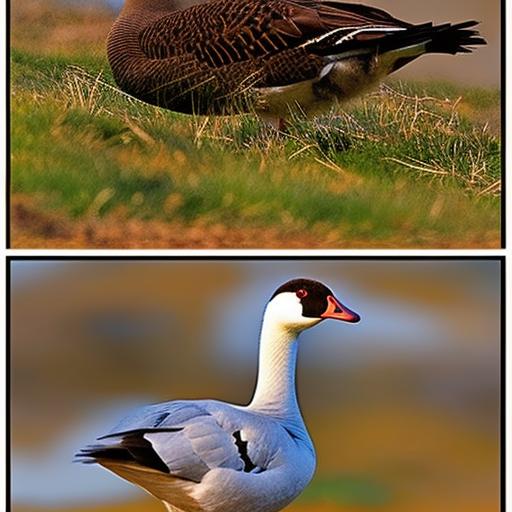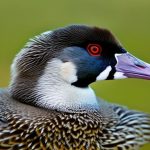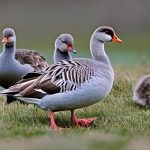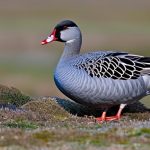Geese are a popular and versatile type of poultry that have been domesticated for thousands of years. They come in a variety of breeds, each with its own unique characteristics and uses. Understanding the different geese breeds is important for anyone interested in raising geese, whether for meat production, egg-laying, pest control, or simply as companions. This comprehensive guide will provide an overview of the various geese breeds and their uses, helping you make informed decisions when choosing the right breed for your needs.
Key Takeaways
- Geese breeds can be categorized into domestic, wild, popular for meat production, ornamental, egg-laying, rare and endangered, pest control, and companion animals.
- Domestic geese breeds have a long history of domestication and are known for their large size and calm temperament.
- Wild geese breeds have a wide distribution and follow specific migration patterns, with some species traveling thousands of miles each year.
- Popular geese breeds for meat production include the Pekin, Embden, and Toulouse, which are known for their large size and high meat yield.
- Ornamental geese breeds, such as the Sebastopol and Cotton Patch, are bred for their unique and decorative appearance.
- Geese breeds for egg-laying, such as the Chinese and African, are known for their high productivity and quality of eggs.
- Rare and endangered geese breeds, such as the Steinbacher and Pilgrim, are being preserved through conservation efforts.
- Geese breeds can also be used for natural and sustainable pest control, such as the African and Chinese breeds.
- Geese breeds can make great companion animals, with some breeds, such as the American Buff, known for their friendly and docile temperament.
- When choosing a geese breed, factors to consider include size, temperament, purpose, and climate suitability.
Domestic Geese Breeds: History and Characteristics
Geese were first domesticated in ancient times, with evidence of their domestication dating back to at least 3,000 BC in Egypt. Over the centuries, different breeds of domestic geese have been developed for various purposes, such as meat production, egg-laying, and even ornamental purposes. Some popular domestic geese breeds include the Toulouse, Embden, and Chinese breeds.
The Toulouse breed is known for its large size and excellent meat quality. It has a calm and docile temperament, making it easy to handle. The Embden breed is also prized for its meat production, as well as its white feathers that are often used for down production. The Chinese breed is smaller in size but is known for its excellent egg-laying capabilities.
Domestic geese are primarily raised for their meat, eggs, feathers, and down. They are also commonly kept as ornamental birds due to their attractive appearance and graceful nature. Some people even keep domestic geese as pets or for exhibition purposes.
Wild Geese Breeds: Distribution and Migration Patterns
While domestic geese have been bred for specific purposes, wild geese retain their natural characteristics and behaviors. There are several species of wild geese found around the world, each with its own unique distribution and habitat preferences. Some popular wild geese breeds include the Canada Goose, Snow Goose, and Greylag Goose.
The Canada Goose is one of the most well-known wild geese breeds, found throughout North America. It is known for its distinctive honking call and V-shaped flight pattern during migration. The Snow Goose is another popular breed, known for its white plumage and large flocks that migrate long distances. The Greylag Goose is native to Europe and Asia and is the ancestor of many domestic geese breeds.
Wild geese are highly migratory birds, traveling long distances between their breeding and wintering grounds. They have well-established migration patterns and behaviors, often flying in large flocks and following specific routes. Understanding the distribution and migration patterns of wild geese breeds can provide valuable insights into their behavior and conservation needs.
Popular Geese Breeds for Meat Production
Geese are a popular choice for meat production due to their flavorful and lean meat. There are several geese breeds that are specifically bred for their meat qualities, with characteristics such as large size, fast growth rate, and high meat-to-bone ratio.
One popular meat breed is the Embden goose, which is known for its large size and excellent meat quality. It has a plump body with a high percentage of breast meat, making it ideal for roasting or other culinary preparations. The Toulouse goose is another popular meat breed, prized for its tender and flavorful meat.
Raising geese for meat production has several advantages. Geese are efficient converters of feed into meat, requiring less feed compared to other poultry species. They are also hardy birds that can thrive in various climates and environments. Additionally, geese have a longer lifespan compared to chickens or turkeys, allowing for multiple years of meat production from a single bird.
Ornamental Geese Breeds: Aesthetic and Decorative Purposes
In addition to their practical uses, geese are also valued for their aesthetic and decorative purposes. There are several geese breeds that are specifically bred for their attractive appearance and graceful nature, making them popular choices for ornamental purposes.
One popular ornamental breed is the Sebastopol goose, known for its unique curly feathers that give it a distinctive and elegant appearance. The Pilgrim goose is another ornamental breed, with its striking black and white plumage. The Egyptian goose is also highly sought after for its vibrant colors and exotic appearance.
Ornamental geese are often kept for exhibition purposes or as decorative additions to ponds and gardens. Their graceful movements and attractive plumage make them a visually appealing addition to any landscape. Some people even keep ornamental geese as pets, enjoying their beauty and gentle nature.
Geese Breeds for Egg-Laying: Productivity and Quality
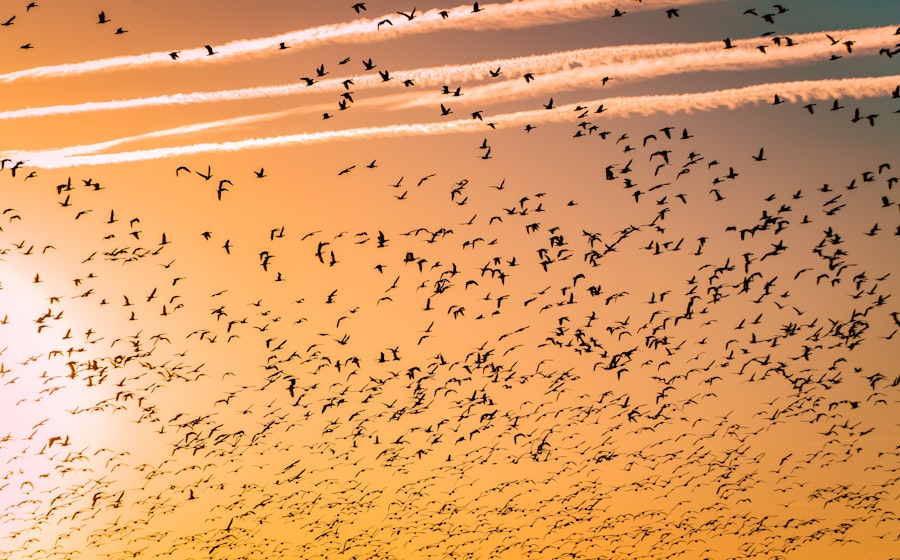
Geese are not only valued for their meat but also for their eggs. While they may not lay as many eggs as chickens or ducks, goose eggs are prized for their large size and rich flavor. There are several geese breeds that are specifically bred for their egg-laying capabilities, with characteristics such as high productivity and good egg quality.
One popular egg-laying breed is the Chinese goose, known for its excellent egg-laying capabilities. It can lay up to 60-70 eggs per year, with each egg weighing around 150-200 grams. The African goose is another breed that is valued for its egg production, with each egg weighing around 150 grams.
Raising geese for eggs has several advantages. Goose eggs are larger than chicken or duck eggs, making them ideal for baking or other culinary uses. They also have a rich flavor and creamy texture that is highly prized by chefs and food enthusiasts. Additionally, geese are hardy birds that can adapt to various climates and environments, making them suitable for egg production in different regions.
Rare and Endangered Geese Breeds: Preservation Efforts
While some geese breeds are popular and widely available, there are also several breeds that are rare or endangered. These breeds often have unique characteristics or historical significance, making their preservation important for maintaining genetic diversity and cultural heritage.
There are several organizations and initiatives dedicated to the preservation of rare and endangered geese breeds. These organizations work to raise awareness about the importance of preserving these breeds, as well as providing support and resources for breeders and enthusiasts. Some examples of rare and endangered geese breeds include the Steinbacher goose, Pomeranian goose, and Shetland goose.
Preserving rare geese breeds is important for several reasons. These breeds often have unique genetic traits that can contribute to the overall health and resilience of the species. They also have cultural and historical significance, representing a connection to our agricultural heritage. By preserving these breeds, we can ensure their continued existence for future generations.
Geese Breeds for Pest Control: Natural and Sustainable Solutions
Geese are not only useful for their meat, eggs, or aesthetic purposes but also for their natural pest control abilities. Certain geese breeds are known for their ability to control pests such as weeds, insects, and snails in a natural and sustainable way.
One breed that is commonly used for pest control is the African goose. This breed is known for its voracious appetite and ability to graze on grasses and weeds, helping to control their growth. The Chinese goose is another breed that is effective at pest control, as it has a strong instinct to forage and consume insects and other small pests.
Using geese for pest control has several advantages. It provides a natural and sustainable solution to pest problems without the need for chemical pesticides. Geese can also access areas that may be difficult for humans or machinery to reach, such as steep slopes or uneven terrain. Additionally, geese can be trained to target specific pests, making them a targeted and effective pest control method.
Geese Breeds for Companion Animals: Temperament and Care
In addition to their practical uses, geese can also make excellent companion animals. Certain geese breeds are known for their friendly and sociable nature, making them suitable for keeping as pets or for providing companionship.
One breed that is often kept as a companion animal is the Pilgrim goose. This breed is known for its calm and docile temperament, making it easy to handle and interact with. The Sebastopol goose is another breed that is popular as a companion animal, with its gentle nature and elegant appearance.
Raising geese as companion animals requires proper care and maintenance. Geese need access to fresh water for swimming and grooming, as well as a balanced diet of grains, grasses, and vegetables. They also require shelter and protection from predators, as well as regular veterinary care. However, the rewards of raising geese as companions can be great, as they can provide companionship, entertainment, and even emotional support.
Choosing the Right Geese Breed: Factors to Consider
When choosing a geese breed, there are several factors to consider. The purpose for which you are raising geese will play a significant role in determining the most suitable breed. Factors such as climate, available resources, and personal preferences should also be taken into account.
Consider the specific characteristics of each breed, such as size, temperament, egg-laying capabilities, or meat quality. Match these characteristics to your intended purpose and environment. For example, if you are primarily interested in meat production, choose a breed known for its large size and good meat quality. If you are looking for an ornamental breed, choose one with attractive plumage and graceful movements.
There are several resources available for further research and information on geese breeds. Books, online forums, and breed associations can provide valuable insights and advice. It is also helpful to connect with experienced breeders or enthusiasts who can share their knowledge and experiences.
In conclusion, understanding the different geese breeds is important for anyone interested in raising geese. Whether you are interested in meat production, egg-laying, pest control, or simply companionship, there is a geese breed that is suitable for your needs. By choosing the right breed and providing proper care and maintenance, you can enjoy the many benefits that geese have to offer. So, explore the world of geese breeds and discover the joys of raising these versatile and fascinating birds.
If you’re interested in learning more about geese breeds, you might also find this article on the incubation period for goose eggs fascinating. Understanding the incubation period is crucial for successful breeding and hatching of geese. To read more about it, check out this informative article.
FAQs
What are geese?
Geese are waterfowl birds that belong to the family Anatidae, which also includes ducks and swans.
How many breeds of geese are there?
There are over 30 breeds of geese, each with their own unique characteristics and traits.
What are some common breeds of geese?
Some common breeds of geese include the Toulouse, Embden, Chinese, African, and Canada Goose.
What is the difference between domestic and wild geese?
Domestic geese are bred and raised by humans for their meat, eggs, and feathers, while wild geese live in their natural habitats and are not domesticated.
What is the average lifespan of a goose?
The average lifespan of a goose is around 10-25 years, depending on the breed and living conditions.
What do geese eat?
Geese are herbivores and primarily eat grasses, grains, and other vegetation. They may also eat insects and small aquatic animals.
What are some uses for geese?
Geese are used for their meat, eggs, feathers, and down. They are also used for weed control, as they can graze on grass and other vegetation.
Are geese protected by law?
In many countries, geese are protected by law and it is illegal to harm or kill them without a permit or valid reason. However, in some areas, geese may be hunted during certain seasons.
Meet Walter, the feathered-friend fanatic of Florida! Nestled in the sunshine state, Walter struts through life with his feathered companions, clucking his way to happiness. With a coop that’s fancier than a five-star hotel, he’s the Don Juan of the chicken world. When he’s not teaching his hens to do the cha-cha, you’ll find him in a heated debate with his prized rooster, Sir Clucks-a-Lot. Walter’s poultry passion is no yolk; he’s the sunny-side-up guy you never knew you needed in your flock of friends!

